
The Atari Jaguar is a home video game console developed by Atari Corporation and released in North America in November 1993. Part of the fifth generation of video game consoles, it competed with the 16-bit Sega Genesis, the Super NES and the 32-bit 3DO Interactive Multiplayer that launched the same year. Powered by two custom 32-bit processors – Tom and Jerry – in addition to a Motorola 68000, Atari marketed it as the world's first 64-bit game system, emphasizing its 64-bit bus used by the blitter. The Jaguar launched with Cybermorph as the pack-in game, which received divisive reviews. The system's library ultimately comprised only 50 licensed games.

The Atari Lynx is a 16-bit fourth-generation hand-held game console released by Atari Corporation in September 1989 in North America and 1990 in Europe and Japan. It was the first handheld game console with a color liquid-crystal display. Powered by a 4 MHz 65C02 8-bit CPU and a custom 16-bit blitter, the Lynx was more advanced than Nintendo's monochrome Game Boy, released two months earlier. It also competed with Sega's Game Gear and NEC's TurboExpress, released the following year.

Kasumi Ninja is a fighting game, developed by Hand Made Software and published by Atari Corporation. Initially it was for the Atari Jaguar in North America and Europe on December 21, 1994, and was later released in Japan by Messe Sanoh in July 1995. It was the first fighting title to be released for the Jaguar, and unsuccessfully sought to capitalize on the trend of ultra violent fighting games started by Midway Games's Mortal Kombat in 1992.

Legend is a side-scrolling hack and slash beat 'em up video game developed by Arcade Zone and originally published in North America by Seika Corporation in April 1994 and later in Europe by Sony Electronic Publishing on December 21 of the same year for the Super Nintendo Entertainment System. It is the first game to be solely developed by the duo of Carlo Perconti and Lyes Belaidouni at Arcade Zone, who both would later go on to found Toka and HyperDevbox Japan respectively.

Soulstar is a hybrid rail shooter/third-person shooter video game developed and originally published by Core Design for the Sega CD in North America in September 1994, Europe in October by Core Design, and later in Japan by Victor Entertainment on December 22.

Ultra Vortek is a fighting game developed by Beyond Games and published by Atari Corporation for the Atari Jaguar in North America and Europe on September 5, 1995. It was the second fighting game released for the Jaguar after Kasumi Ninja and unsuccessfully sought to capitalize on the trend of violent fighting games started by Midway Games's Mortal Kombat in 1992. It was the only officially released game that supports the unreleased Jaguar Voice Modem peripheral for online play.
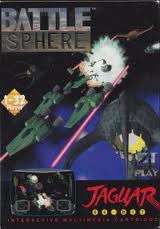
BattleSphere is a space combat simulation video game developed by 4Play for the Atari Jaguar. The game was released in 2000, with the enhanced edition BattleSphere Gold released in 2002. Set during a future war between seven alien races, the factions agree to confine their hostilities to a tournament with the galaxy at stake. Gameplay consists of five modes, each featuring distinct scenarios and objectives. Up to 16 players can participate in a deathmatch mode via local area network (LAN) play.
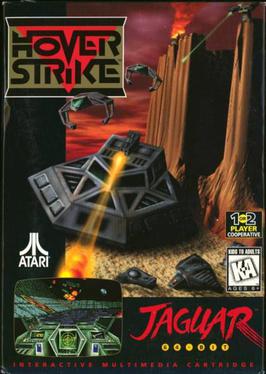
Hover Strike is a shooter video game developed and published by Atari Corporation exclusively for the Atari Jaguar first in North America in April 1995, then in Europe on May of the same year and later in Japan around the same period, where it was published instead by Messe Sansao. Taking place in a future where the Terrakian Pirates have seized control of a colonized foreign planet, players are tasked with piloting an armed hovercraft vehicle in an attempt of rescuing the captured colonists and obliterate the invading alien forces from the surface of the planet before the Federation armada arrives.

Iron Soldier is an open world first-person mecha simulation video game developed by Eclipse Software Design and published by Atari Corporation for the Atari Jaguar in North America and Europe on December 22, 1994, then in Europe in January 1995 and later in Japan on March 24 of the same year, where it was instead published by Mumin Corporation. The first installment in the eponymous franchise, the game is set in a dystopian future where industries and machinery has overrun most of the surface on Earth, as players assume the role of a resistance member taking control of the titular mech in an attempt to overthrow the dictatorship of Iron Fist Corporation, who have conquered the world through usage of military force.

Arena Football '95 is an unreleased arena football video game that was in development by V-Real Interactive and planned to be published by Atari Corporation on a scheduled August 1995 release exclusively for the Atari Jaguar. If it had been released before Midway Games' Kurt Warner's Arena Football Unleashed, it would have been the first officially licensed indoor american football game by the Arena Football League.

Robinson's Requiem is a 1994 survival simulation video game developed and originally published by Silmarils exclusively in Europe for the Atari ST, Atari Falcon and Amiga. Taking place in the 22nd century where Earth and colonized planets are facing overpopulation, the game sees players assuming the role of Robinson officer Trepliev 1 from the Alien World Exploration department in his attempt to escape imprisonment from the fictional planet of Zarathustra alongside another AWE Robinson named Nina1, while facing several hostile creatures and dangers in order to survive.

Skyhammer is a shooter video game developed by Rebellion Developments and published by Songbird Productions for the Atari Jaguar on May 22, 2000. Its gameplay style is reminiscent of Psygnosis' G-Police for the PlayStation, which was released three years prior to the game.
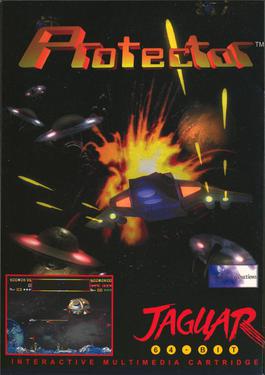
Protector is a horizontally scrolling shooter developed by Bethesda Softworks and published by Songbird Productions for the Atari Jaguar on November 27, 1999. It is based on Søren Grønbech's 1989 Amiga game Datastorm, which in turn it was inspired by both Defender and Dropzone.

Iron Soldier 2 is an open world first-person mecha simulation video game developed by Eclipse Software Design and published by Telegames for the Atari Jaguar and Atari Jaguar CD on December 30, 1997. It is the sequel to Iron Soldier.
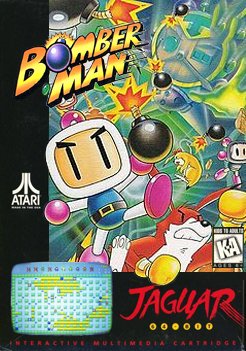
Bomberman Legends, also known as Jaguar Bomberman, is an unreleased action-maze video game that was in development by Genetic Fantasia and planned to be published by Atari Corporation for the Atari Jaguar. It was going to be a unique entry in the Bomberman franchise, featuring its own dedicated single-player and multiplayer modes, with the latter having support for up to eight players by using two Team Tap adapters.
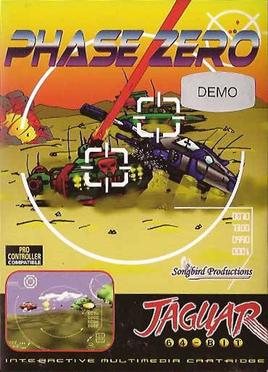
Phase Zero is an unfinished shooter video game that was being developed by Hyper Image Productions and would have been published by Atari for the Atari Jaguar. Set in the future on a terrestrial planet, the player takes on the role of a newcomer to the Phase Zero squad, piloting a hovercraft to fight rival corporate states. The player is tasked with various objectives while fighting enemies in multiple missions.

Varuna's Forces is an unreleased sci-fi video game that was in development by Accent Media Productions and planned to be published by Atari Corporation for the Atari Jaguar CD and JVC for 3DO Interactive Multiplayer, Dreamcast, PC, PlayStation and Sega Saturn.

Mad Bodies is a homebrew Breakout-style/shoot 'em up video game developed and published by FORCE Design exclusively for the Atari Jaguar on May 2, 2009. It is the first and only title to be released for the platform as of date by FORCE Design.

Black Out! is a 2012 puzzle homebrew video game developed and published by Stormworks Interactive for the Atari Jaguar and Atari Jaguar CD. It is the first and only title shipped currently by Stormworks Interactive. In the game, the player must turn off all the light bulbs in a 3x3 grid pattern with the lowest amount of moves possible across four stages comprising ten levels each. The player also has a pre-set move limit and a fixed time limit to solve the puzzle efficiently depending on the difficulty setting.




















